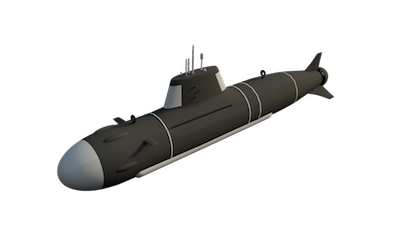The North Korean Gwisin-class
The following is a work of speculative fiction, or FICINT (fiction intelligence).
New information, including intelligence obtained during a recent engagement in the Yellow Sea, has shed light on the North Korean Gwisin-class microsubmarine.


-
Undersea still and video imagery obtained during the battle indicates that the Gwisin's hull form is based on the Kilo-class submarine. The stern, however, is nearly identical to the Chinese Shāyú-class, confirming earlier intelligence that North Korea has acquired several core technologies used in the Shāyú, including propulsion.
-
Even with its non-nuclear power plant, the Gwisin appears capable of long-range missions. (The Yellow Sea engagement occurred approximately 250km off shore.) However, it is possible that they were launched from a Sang-O-class submarine operating in the area, or another submarine or surface vessel operating beyond the Strikepods' sensor range.
-
It is unclear whether the Gwisins detected the Strikepods with onboard passive sonar, or were alerted to their presence via a third party sensor. No undersea communication was detected prior to the engagement, and the Gwisins' active sonar was not employed until the Strikepods were engaged. This suggests that the Gwisin possesses a moderate to high-powered passive sonar capability, or that the KPN has developed a clandestine form of long range undersea communication.
-
The Gwisin's top speed appears to be 15-20 knots, however with its finite power source it is likely not capable of sustained high-speed runs. It is, however, highly maneuverable at lower speeds, and analysis indicates that the Gwisin may be equipped with a form of thrust vectoring technology that enables it to out-turn adversaries and escape.
-
Chemical analysis at the battle scene also indicated the presence of a polymer in the surrounding seawater, suggesting that, in addition to thrust vectoring, the Gwisin incorporates drag reduction technologies, such as a polymer ejection system.

|
|
[End]
Strikepod Command


